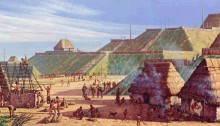Teaching Healthcare History in the Age of Obama
I should have seen it coming. Really! But when I planned a class discussion on the origins of Medicare, I hadn’t considered the implications for our ongoing national conversation about universal healthcare. Fortunately, my students are more perceptive than I am, and they instantly made the connection for me. “So, even back then people were…

